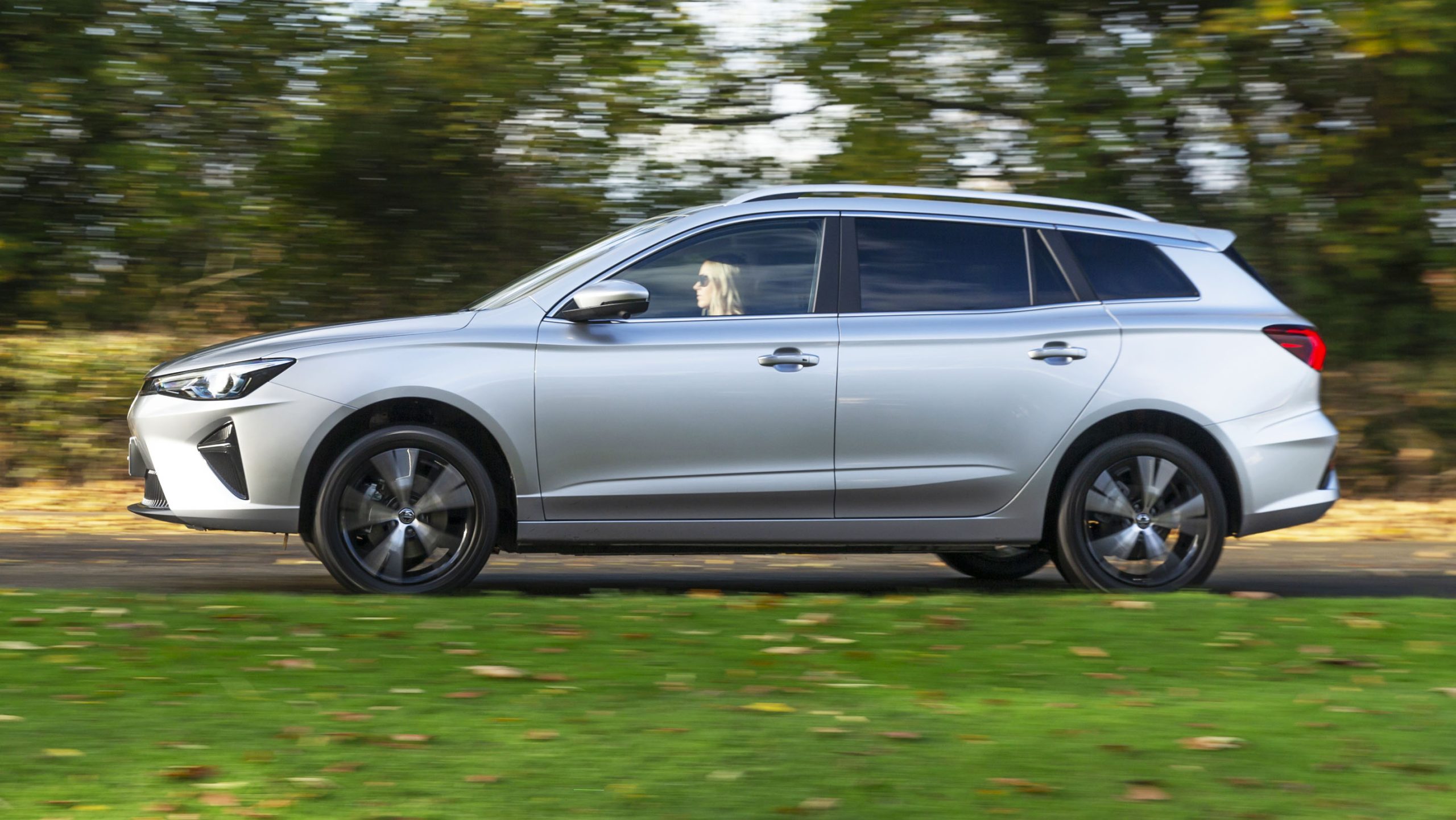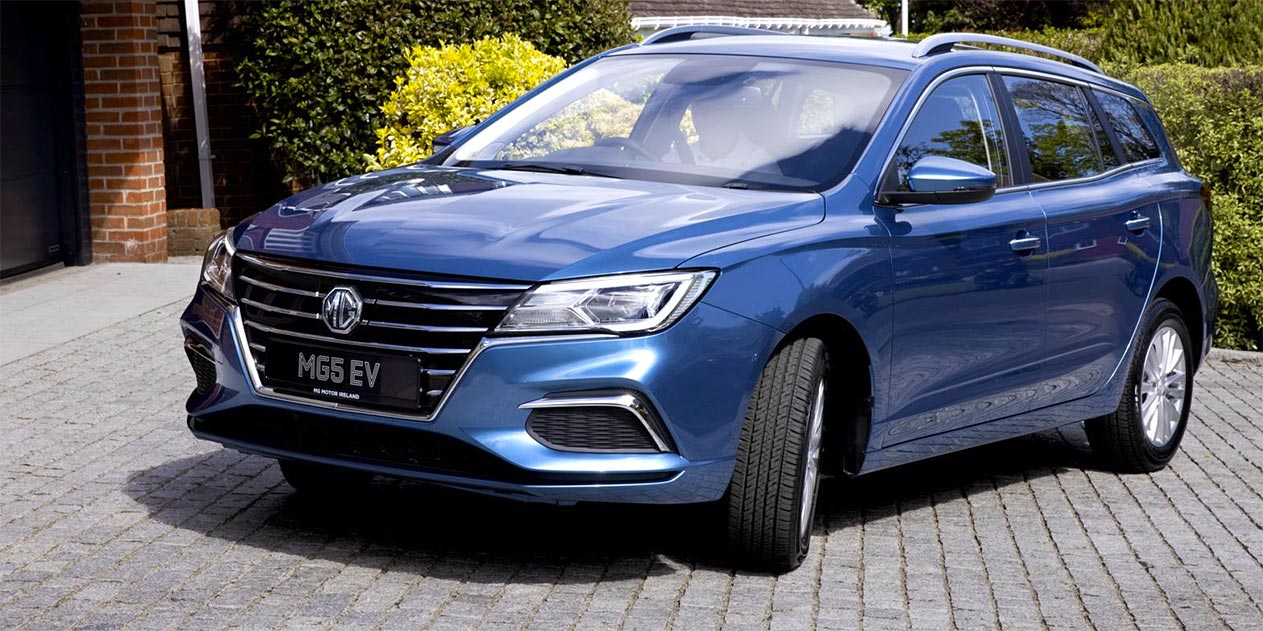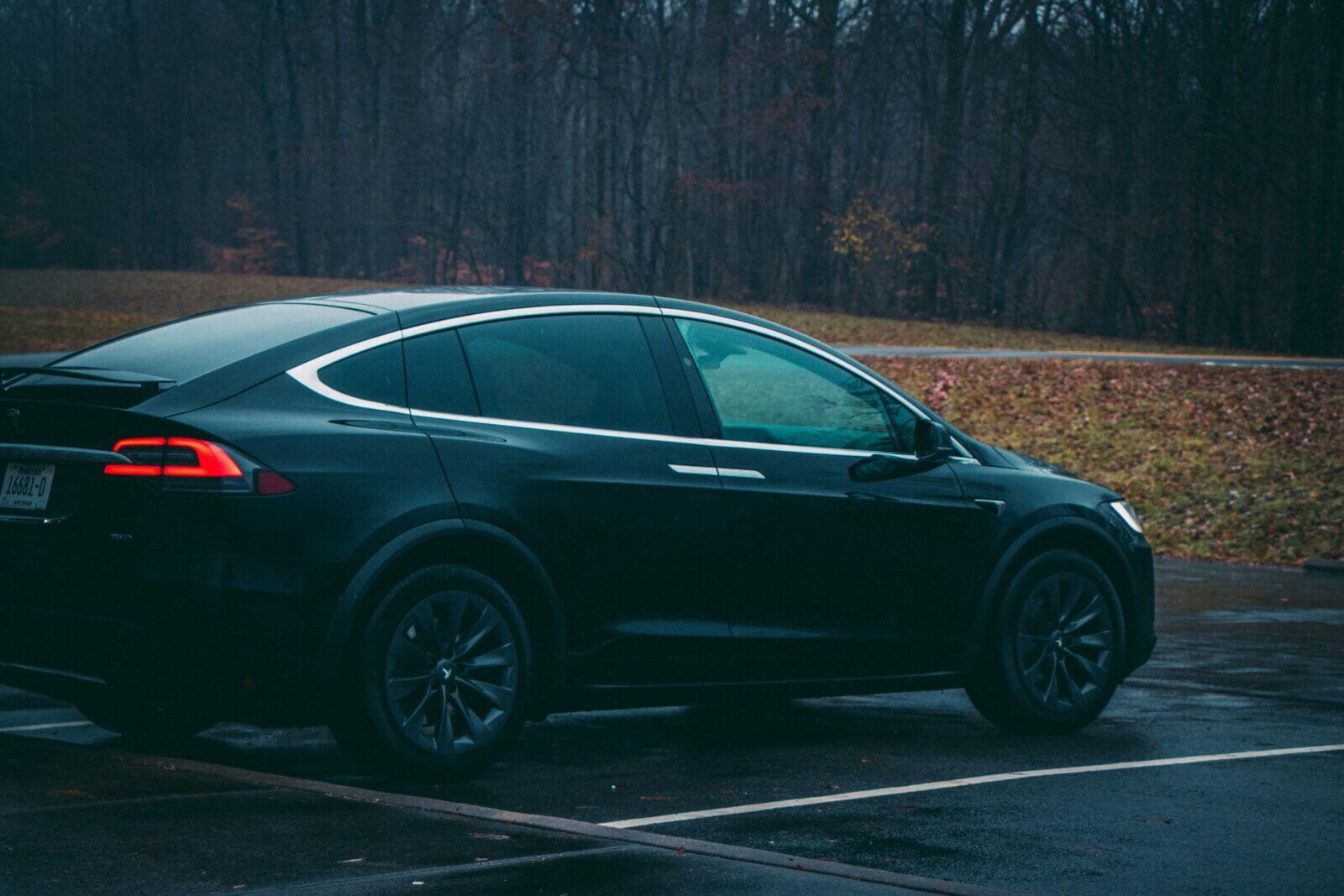
The most affordable used electric cars: how to choose and what to know
Electric cars have long ceased to be a novelty on the road. Many people want to buy environmentally friendly vehicles, but new cars are expensive. This is where used electric cars come in, as they can be a great option for those who want to save money. In this article, we'll look at the most affordable used models, their features, and what to look for when buying one. [...]
Content:
Electric cars have long ceased to be a novelty on the road. Many people want to buy environmentally friendly vehicles, but new cars are expensive. This is where used electric cars come in, as they can be a great option for those who want to save money. In this article, we'll look at the most affordable used models, their features, and what to look for when buying one.
1. KIA Soul EV
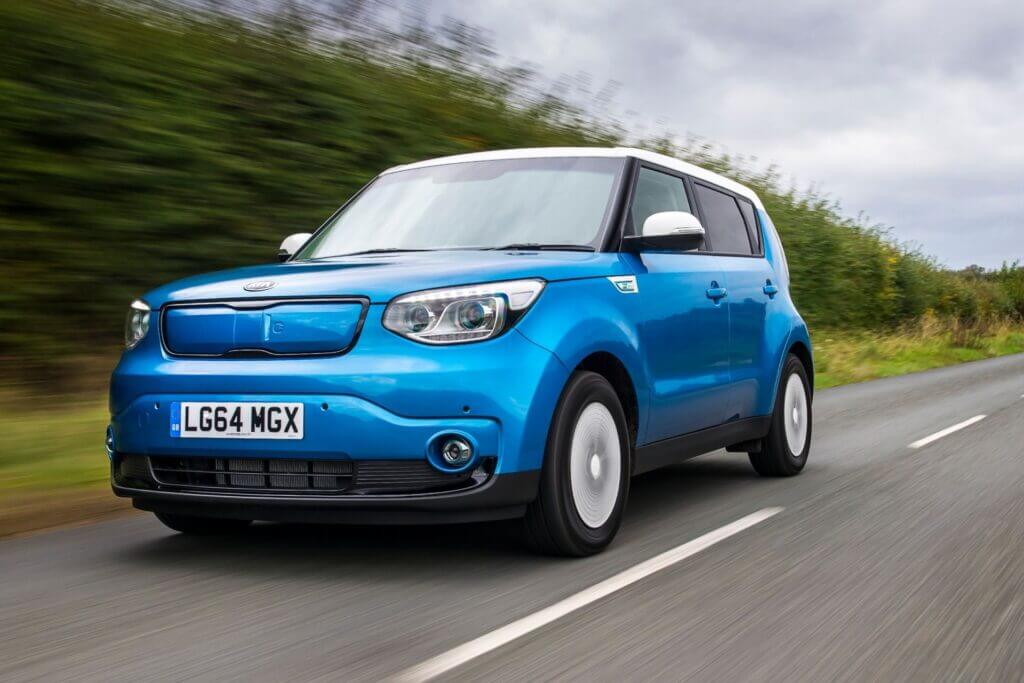
The KIA Soul EV is an electric version of the compact crossover based on the standard KIA Soul model. Its design almost completely repeats the style of the petrol version, but the electric vehicle has certain visual differences, including a modified front end with a cap instead of a grille, as well as aerodynamic wheels. The car is equipped with front-wheel drive, and its size makes it a convenient option for urban environments.
The model has a fairly spacious interior for its class. Among the notable features is a high ground clearance, which makes the car comfortable not only on smooth roads but also on less well-groomed areas. The interior of the KIA Soul EV is simple yet comfortable, with an on-board computer, heated seats and other modern features. In addition, the car boasts well-established acoustic noise protection.
The 111 horsepower electric motor provides a decent range for daily commuting. The 80% can be recharged in just 30 minutes with Chademo's fast charger, making it easy to use in the city. The car has a top speed of 145 km/h, which allows you to move comfortably both in urban environments and on highways.
General characteristics:
- Power: 111 hp.
- Power reserve: 176 km
- Top speed: 140 km/h
- Battery capacity: 30 kWh
- Ground clearance: 150 mm
- Charging time with fast charging: 5 h
2. Nissan Leaf
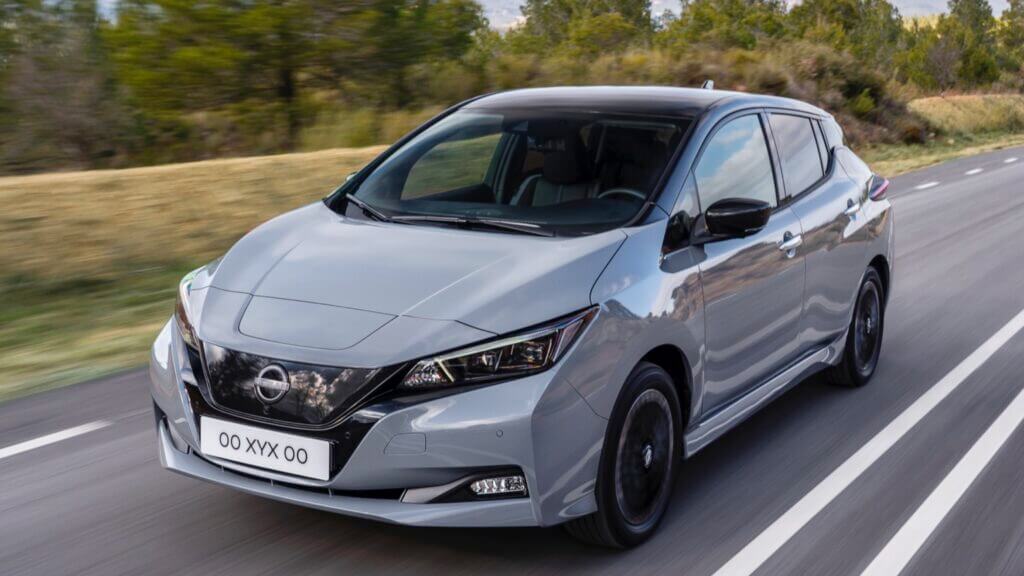
The Nissan Leaf is an electric vehicle manufactured by the Japanese manufacturer Nissan, which was first released in 2010. This model is a five-door hatchback that is distinguished by its front-engine and front-wheel drive layout. The Leaf was the first mass-market electric car available in Japan, the United States and later in Europe. Production of the car was launched in Japan, the United States and the United Kingdom, which allowed us to cover the main sales regions.
The Leaf is based on the Nissan V platform, which is also used for other Nissan vehicles such as the Nissan Juke and Nissan Micra. An electric motor with 109 horsepower and 254 Nm of torque allows the car to move confidently in urban environments, providing a quiet and comfortable ride. The car is equipped with a lithium-ion battery that offers a range of up to 200 km on a single charge, depending on the operating conditions.
The Nissan Leaf can be charged both from a regular household outlet and using special charging stations that significantly reduce charging time. Thanks to its low centre of gravity, which is ensured by the location of the battery under the floor of the car, the Leaf offers good stability on the road.
General characteristics:
- Power: 109 hp.
- Cruising range: up to 200 km
- Battery capacity: 24-62 kWh
- Acceleration 0-100 km/h: 6.9 to 11.5 s
- Top speed: 140 km/h
3. Volkswagen e-Up
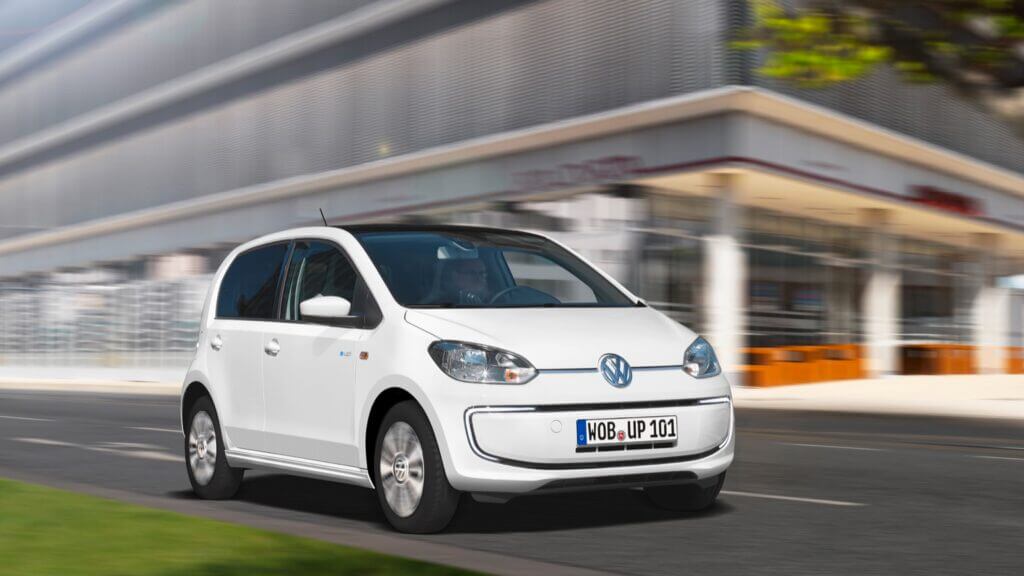
The 2014 Volkswagen e-Up is a compact city electric vehicle based on the standard petrol version of the Volkswagen Up. This model is equipped with a 60 kW (82 horsepower) electric motor that drives the front wheels via a two-speed gearbox. The 18.7 kWh lithium-ion battery provides the vehicle with a range of up to 150 km on a single charge, making it suitable for daily city driving.
The exterior of the electric vehicle differs from the petrol version with a modified bumper, LED running lights and 15-inch alloy wheels. The interior of the car is designed with an emphasis on compactness and functionality, and includes all the necessary options for comfortable use in an urban environment.
It takes approximately 6 hours to fully charge the battery from a conventional wall outlet, but at specialised charging stations, the 80% can be charged in just 30 minutes. The Volkswagen e-Up has a top speed of 130 km/h and acceleration to 100 km/h takes 12.4 seconds, making it efficient for short to medium distances.
General characteristics:
- Top speed: 140 km/h
- Acceleration 0-100 km/h: 12,4 с
- Power reserve: 150-160 km
- Electric motor power: 60 kW
- Drive: front wheel drive
4. Chevrolet Bolt EV

The Chevrolet Bolt EV is an all-electric hatchback developed by General Motors in collaboration with LG Corporation. This model debuted on the market in 2016, and since 2017, the car has been available in Europe under the name Opel Ampera-e. The Chevrolet Bolt EV stands out for its technical characteristics and spacious interior, providing comfortable transportation for five people and a large luggage compartment.
The car's electric motor has a capacity of 150 kW (200 hp) and delivers 360 Nm of torque. This allows the Bolt EV to accelerate to 100 km/h in 7.2 seconds. The 60 kWh lithium-ion battery allows the car to travel up to 380 km on a single charge. The full charge time from the home network (220 V) is about 9 hours, and at special charging stations, the battery can be charged to 50% in 30-40 minutes.
The design of the Chevrolet Bolt EV combines compactness with high functionality. Thanks to modern technologies, the car provides a low coefficient of aerodynamic drag (0.308 Cx), which has a positive impact on energy efficiency. Inside the car, there is a 10.2-inch touchscreen that provides access to multimedia functions and climate control settings.
General characteristics:
- Power: 200 hp.
- Power reserve: 380 km
- Battery: 60 kWh
- Charging time: 9 h (from a 220 V home network)
- Acceleration 0-100 km/h: 7,2 с
- Top speed: 140 km/h
5. Mitsubishi i-MiEV
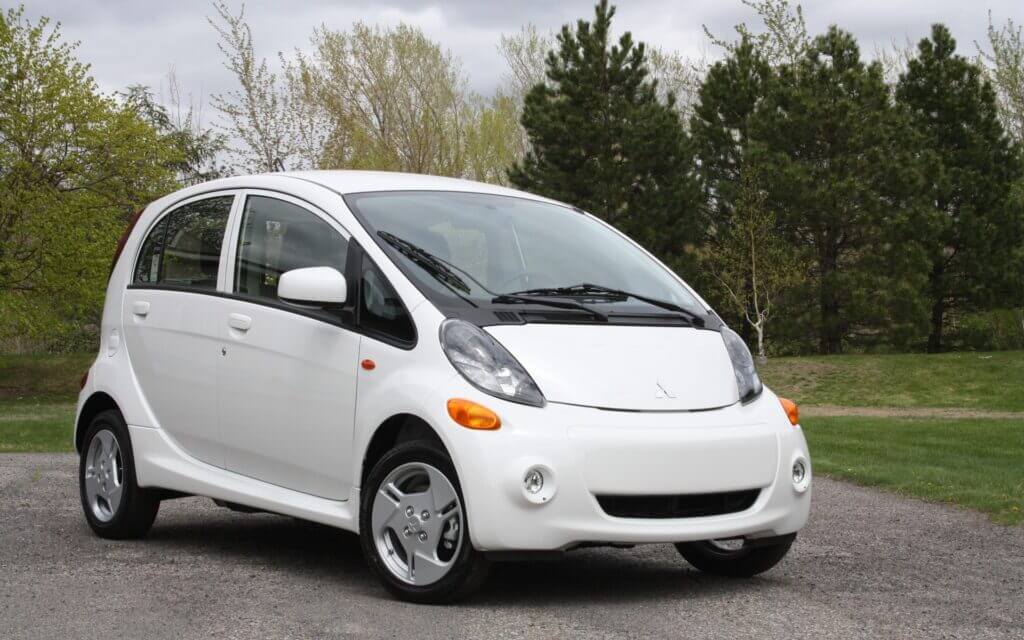
The Mitsubishi i-MiEV is a fully electric five-door hatchback developed by Mitsubishi Motors based on the Mitsubishi i petrol model. The electric car was first introduced in 2009 in Japan, where initial sales were limited due to its high cost. Subsequently, due to price reductions, the model became more affordable and began to be sold in various international markets, including Europe and the United States. In Europe, analogues were also produced under the Citroën (C-Zero) and Peugeot (iOn) brands.
The main features of the i-MiEV include a 64 horsepower electric motor and a lithium-ion battery that allows it to travel about 120-160 km on a single charge, depending on the modification. In addition, the car is equipped with a single-speed transmission that transmits torque to the rear wheels. The vehicle weighs 1,110 kg, which makes it about 200 kg heavier than the petrol version.
The Mitsubishi i-MiEV electric car is widely used thanks to environmental benefits and support from government programmes in various countries. The model is popular among city drivers due to its compact size, which makes it easy to manoeuvre in urban environments.
General characteristics:
- Power: 64 hp.
- Power reserve: 120-160 km
- Battery: 16 kWh
- Acceleration 0-100 km/h: approx. 13 s
- Top speed: 140 km/h
6. Smart Fortwo Electric Drive
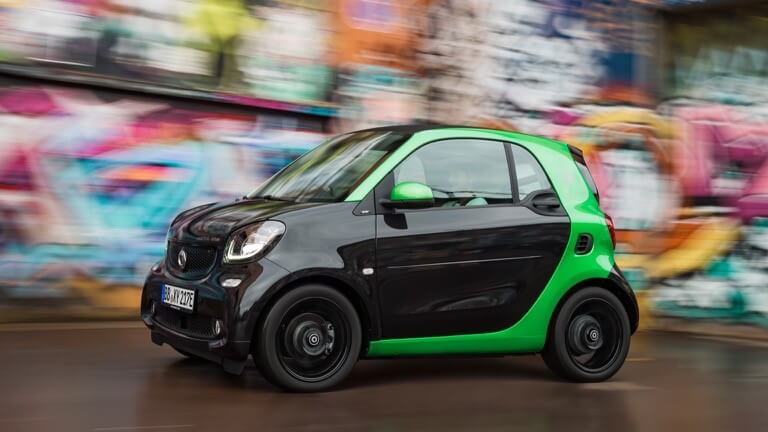
The Smart Fortwo Electric Drive is an electric version of the popular two-seater city car that was first launched in 2012. The model has compact dimensions, which makes it ideal for city driving. It is available in two body styles: coupe and cabriolet. Drivers can not only save on fuel, but also enjoy the dynamics of driving thanks to an electric motor that delivers 75 hp of power.
The car has a 75 hp electric motor, which allows it to accelerate to 100 km/h in 11.5 seconds, and the range is about 110 km on a single charge. The installed 17.6 kWh lithium-ion battery allows the electric car to be used for daily trips around the city. Charging takes 6 to 8 hours from a regular household outlet or up to 30 minutes when using high-speed charging stations.
The Smart Fortwo Electric Drive is equipped with air conditioning, a climate system with preheating or cooling, and a multimedia system that can be controlled via a smartphone. Additional amenities include a panoramic roof, leather seats and a navigation system.
General characteristics:
- Power: 75 hp.
- Power reserve: 110 km
- Battery: 17.6 kWh
- Charging time (220V): 6-8 hours
- Top speed: 140 km/h
- Acceleration 0-100 km/h: 11,5 с
- Drive: front wheel drive
- Ground clearance: 160 mm
- Trunk capacity: 221 л
7. Chevrolet Spark
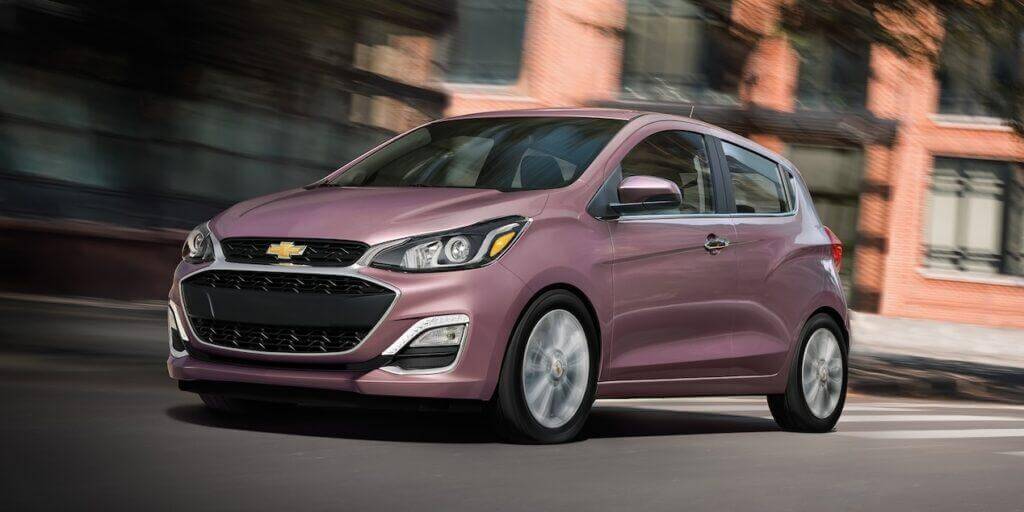
The Chevrolet Spark is a city car that was launched in 1998 by Daewoo Motors and later taken over by General Motors after the purchase of Daewoo in 2002. The car was popular in different countries due to its compact size and economy, which made it a convenient option for city driving. The Spark was produced in several generations, each with new design and technology improvements.
One of the key versions of the Chevrolet Spark was the Spark EV electric model, which was introduced in 2013. The Spark EV was General Motors' first electric vehicle to be released for retail sales and offered an environmentally friendly alternative to petrol engines. The model was equipped with a 130 hp electric motor and a 21.3 kWh battery, which provided a range of up to 132 km.
Throughout its history, the Spark has been produced under various brands, such as Daewoo Matiz, Pontiac G2, Holden Barina Spark, as well as local names in countries such as China, India, Mexico and Vietnam. The model also received modifications for the European and Asian markets, where it was sold as Chevrolet Matiz and Baojun Lechi.
General characteristics:
- Class: city car
- Body: 5-door hatchback
- Drive: front wheel drive
- Engines: petrol, electric, diesel
- Maximum power: up to 130 hp.
- Cruising range (for EV): 132 km
- Charging time (Spark EV): Up to 30 minutes for fast charging
8. Fiat 500e
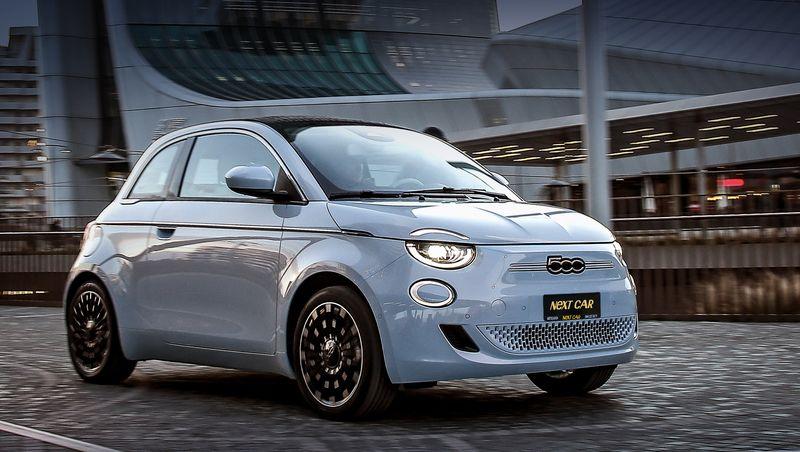
The Fiat 500e is an electric version of the popular Italian city car Fiat 500, which has been adapted for environmentally conscious drivers. The electric car retains the classic design of its petrol predecessor, but has a number of specific elements that distinguish its electric nature, such as a modified grille and a slightly larger rear spoiler. This car offers compact dimensions, which makes it convenient for use in the city.
The interior of the Fiat 500e follows the style of the petrol version, but with an adapted dashboard that displays important information for an electric vehicle, such as battery status and range. The front seats provide sufficient comfort for drivers of different sizes, although space for rear passengers is limited due to the battery position.
Technically, the Fiat 500e is equipped with a 111 hp electric motor that provides quick acceleration and a top speed of 141 km/h. The 24 kWh lithium-ion battery allows it to travel up to 139 km on a single charge. Charging time from a standard wall outlet is around 4 hours, making it convenient for daily commuting.
General characteristics:
- Type: electric vehicle
- Power: 111 hp / 83 kW
- Battery: 24 kWh
- Power reserve: 139 km
- Charging time (220 V): 4 hours
- Top speed: 140 km/h
- Acceleration 0-100 km/h: 9.1 seconds
9. BMW i3
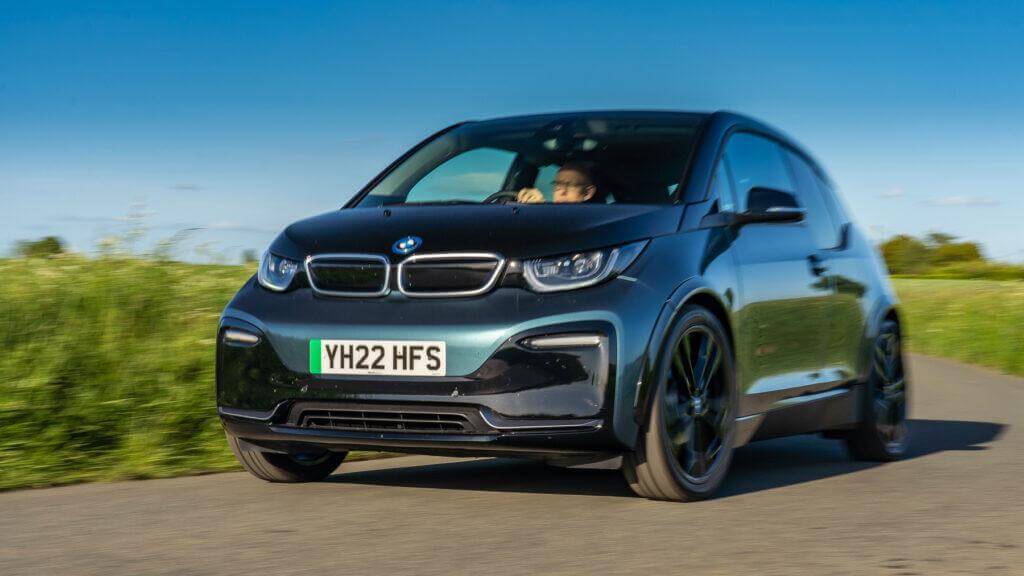
The BMW i3 is a German-made electric car that was produced from 2013 to 2022. This model is distinguished by its rear-engine layout and is manufactured using environmentally friendly materials, which minimises its impact on the environment. The BMW i3 has received high marks for environmental friendliness and safety, including in the Green NCAP rating. The car is distinguished by its body made of carbon fibre reinforced plastic mounted on an aluminium frame, which ensures lightweight construction and high rigidity.
The electric vehicle is equipped with modern infrastructure, including a built-in SIM card that allows it to connect to the information network. This provides convenience when planning trips, taking into account the battery level, routes and driving conditions. A special feature of the BMW i3 is the ability to control the speed of the car with one pedal, thanks to the energy recovery system, which simplifies the process of braking and recharging the battery.
The model also has a Range Extender option that uses a petrol engine to recharge the battery while driving. In addition, the BMW i3 has undergone a series of updates, including an increase in battery capacity, which allows it to travel up to 300 kilometres on a single charge.
General characteristics:
- Power: 170 hp.
- Battery: 33-42.2 kWh
- Cruising range: up to 300 km
- Charging time (220 V): up to 4 hours
- Top speed: 140 km/h
- Weight: from 1195 to 1460 kg
10. Volkswagen e-Golf 2017
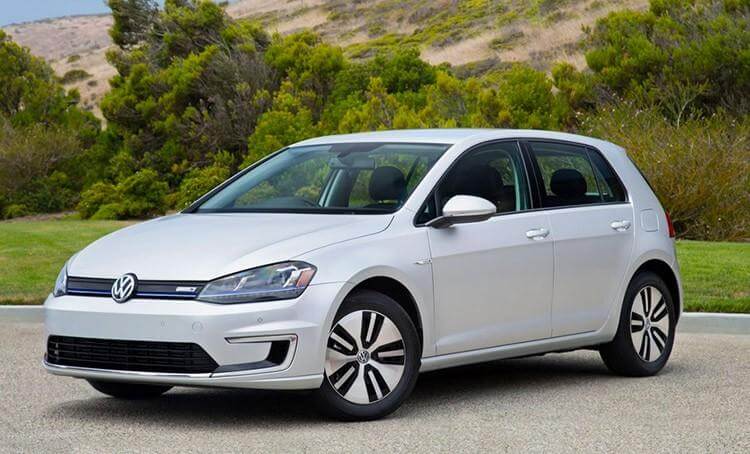
The 2017 Volkswagen e-Golf is the second generation of the electric hatchback, which has retained its compact dimensions, although it has received a number of updates in appearance and technical characteristics. The car's body is built on the MQB platform, which allowed engineers to increase battery capacity while maintaining the overall weight and shape of the car. Exterior changes include new headlights, an updated front bumper and alloy wheels.
The interior of the Volkswagen e-Golf retains its traditional design but has been updated with modern technology. The driver's dashboard can be fully electronic, with animated indicators, and the central display has been enlarged to 10 inches. Despite its compact dimensions, the cabin remains comfortable for the driver and passengers, but the boot volume has slightly decreased due to the larger batteries.
The 2017 Volkswagen e-Golf has significantly improved technical specifications. The range has been increased to 300 km thanks to a new 35.8 kWh lithium-ion battery. The electric motor has 136 hp, which allows the car to accelerate to 100 km/h in 9.6 seconds. The car has a top speed of 150 km/h.
General characteristics:
- Power: 136 hp.
- Power reserve: 300 km
- Battery: 35.8 kWh
- Charging time: 7-10 hours (from home network), 1 hour (on a fast charging station)
- Acceleration 0-100 km/h: 9,6 с
- Top speed: 140 km/h
ECOFACTOR - Charging stations for electric vehicles and innovative solutions
We, ECOFACTORWe specialise in the development, production and support of charging stations for electric vehicles in Ukraine and abroad. Our solutions are aimed at creating eco-friendly transport, supporting sustainable development and implementing green technologies. We are actively working on the development of charging infrastructure, offering both mobile chargers and stationary stations for businesses and private customers.
Our product portfolio includes various types of charging stations, from mobile devices to commercial DC and AC solutions. We also create software for monitoring and controlling charging stations, which makes it easy to integrate them into business processes or use them in everyday life. Thanks to our products, electric vehicle owners can charge their cars safely and conveniently.
Our services:
- Production and sale of charging stations for electric vehicles
- Mobile chargers and accessories
- SaaS platform for managing charging stations
- Supporting the charging network in Ukraine and beyond
Our company is developing the electric transport ecosystem by providing innovative solutions for electric vehicle owners and businesses.
Conclusion.
When choosing the cheapest electric car on the secondary market, it is worth considering that many of these cars are brought to Ukraine from the US damaged and then repaired. This is not only a common practice, but also an opportunity to get a much better price. However, when buying such cars, it is important to carefully check the repair history and choose reliable sellers to be sure of the quality of the restoration.
Ultimately, used electric cars can be a great option for those looking for eco-friendly transport at an affordable price, especially if you're willing to consider refurbished vehicles.



